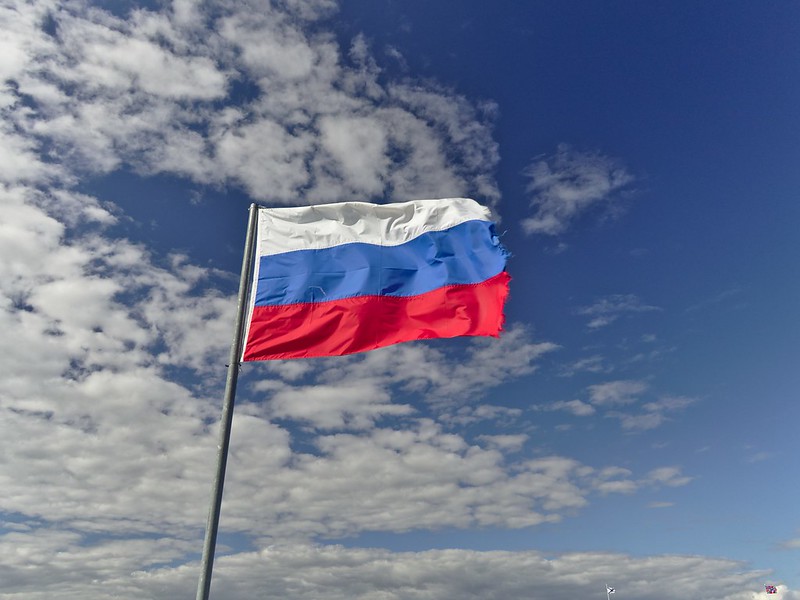In 2020, Tajikistan overtook Kazakhstan on the list of countries whose citizens received Russian passports in 2020, coming second behind only Ukraine. Last year, a record number of Tajiks—more than 63,000—received citizenship of the country where many of them have been working for three decades.
This article first appeared on Voices on Central Asia on 18 February 2021.
2020 has seriously disrupted the mobility of people around the world, with knock-on effects for migration and the legalization thereof—that is, the receipt of documents regulating legal residence. The closure of borders, including between Russia and the Central Asian republics, meant that more than half of all labour migrants were unable to enter Russia, while those who lost their jobs had to return to their home countries. Fortunately for those who remained, the Russian authorities, facing a labour shortage, provided migration relief, extended the validity of documents, and also halted deportations.
Want more Central Asia in your inbox? Subscribe to our newsletter here.
Thus, while the pandemic may have impacted the number of migrants in Russia, the fact remains that in 2020, the Russian Federation provided a record number of passports to new citizens—almost 660,000!
Here is a look at the official migration figures published by the Ministry of Internal Affairs of the Russian Federation, which shows some interesting trends for Central Asians in Russia.
New Russians
Some 145,000 people from Central Asia became citizens of the Russian Federation in 2020. This is about 20,000 more than a year earlier. The growth came among Tajik citizens, who overtook citizens of Kazakhstan on the list of Central Asian countries whose citizens received the highest number of Russian passports in a year. On this peculiar ranking, Tajikistan is second only to Ukraine, hundreds of thousands of whose former and current citizens become Russians every year. In 2020, almost 410,000 Ukrainians received a Russian passport through a simplified process; they comprised 63% of all new Russians in 2020.
The former Soviet republics (excluding the Baltic states, Georgia, and Turkmenistan) retain their traditional interest in Russian citizenship, reflected in five-digit numbers of applications. Among the Central Asian republics, more citizens became new Russians in 2020 than in 2019 in all the republics other than Kazakhstan, which saw a decline of 7,000 compared to 2019. In Kazakhstan, it is ethnic Russians who most often apply for Russian citizenship.
If some simplified schemes for legal labor migration are created, it is possible that the number of Central Asians who wish to obtain Russian citizenship will decline. After all, the reason to apply for citizenship is to be able to work legally in the Russian Federation without any constraints or the need to pay for a costly patent (work authorisation). This may explain, for example, the comparatively lower numbers of Kyrgyzstanis applying for Russian citizenship, as they can already work in Russia on their own passports as part of the Eurasian Economic Union.
The relatively small number of Uzbeks among those receiving Russian citizenship (there are fewer of them than, for example, Armenians, and almost as many as Moldovans and Azerbaijanis) may be explained by Uzbekistan’s strict prohibition on dual citizenship—which comes with a requirement that the decree renouncing Uzbek citizenship be signed by the president himself. Moreover, those Uzbeks and Turkmens who apply for foreign citizenship usually do so in non-CIS countries. Some Turkmens held dual citizenship with the Russian Federation until 2003, but now they cannot even enter the country without a visa.
Russians-to-Be
In Russia, a prospective citizen must get a residence permit before attaining Russian citizenship. In 2020, almost 225,000 foreign citizens received their first Russian residence permit (Vid na Zhitelstvo), which is 40,000 more than the previous year. This growth was mainly due to Central Asians, in particular citizens of Tajikistan, who led the pack with almost 50,000 residence permits. Ukrainians received fewer than 37,000, followed by Kazakhstanis and Uzbekistanis at about 25,000 each.
Counting those who were living in Russia on a valid residence permit by the end of the year, Tajikistan and Uzbekistan ranked second and third, respectively, behind Ukraine. By the New Year, less than 125,000 Ukrainians had a residence permit in Russia (this is 30,000 fewer than last year). Azerbaijanis (60,000) and Armenians (56,000) rounded out the top five. More Kazakhstanis have a Russian residence permit than Belarusians (35,000), though fewer Turkmens hold these permits than Vietnamese (11,000).
Since the end of 2019, the Russian residence permit has been issued with no expiration date (previously, this document had to be renewed every five years). If there is no strong imperative to do so, the holders of this document no longer need to spend time and energy on the stressful process of obtaining citizenship, which was probably the intent of the new rule.
The same is true of the temporary residence permit (Razreshenie na vremennoe prozhivanie, RVP). Tajikistan and Kazakhstan are ahead of Ukraine in terms of the number of their citizens who received RVP last year. But if we take into account the total number of foreign citizens who were living on temporary residence permits in the Russian Federation by the end of 2020, all the Central Asian republics are lagging behind Ukraine.
In 2021, Russia lowered the quotas for the number of foreign citizens who could receive an RVP by 35%. Whereas in 2020 there were more than 60,000 such permits available, in 2021 there will be just 40,000. That being said, there is also a category of foreign citizens who can apply for RVP without being limited by the quota.
Working in Russia…
… was difficult last year. Borders were closed; businesses and enterprises were on lockdown. The borders of the Russian Federation remain closed to citizens of Tajikistan, Uzbekistan, and Turkmenistan, and it is not yet known when they will reopen.
Accordingly, the number of legal labour migrants from Central Asian countries to Russia decreased by more than half—by 58% in Kyrgyzstan, 57% in Tajikistan, 56% in Kazakhstan, and 52% in Uzbekistan.
Nevertheless, more than 2.3 million people—many of them Central Asians—managed to enter Russia in 2020, whether before the borders were closed in the spring of 2020 or after their opening.
In 2020, 145,000 Central Asian residents of Russia received Russian passports. Almost 400,000 more live in Russia on residence permits and can potentially apply for Russian citizenship in the future. Millions of young workers are looking for work in Russia.
What do these numbers suggest? Does it look like a mass migration from the Central Asian region? Yes. Will Central Asia lose its population? No.
Demographics in Central Asia are still coping with massive population outflows due to the high birth rate in the region, but it is obvious that more massive diasporas of immigrants from Central Asia are already appearing in Russia, given the number of those who work in Russia legally and illegally. We will learn about the total number of Russians of Central Asian origin next year, when the results of the census, which is scheduled for this fall, will be made available.
Voices on Central Asia
 More Russian passports, fewer labour migrants: Central Asian migration to Russia in 2020
More Russian passports, fewer labour migrants: Central Asian migration to Russia in 2020 



